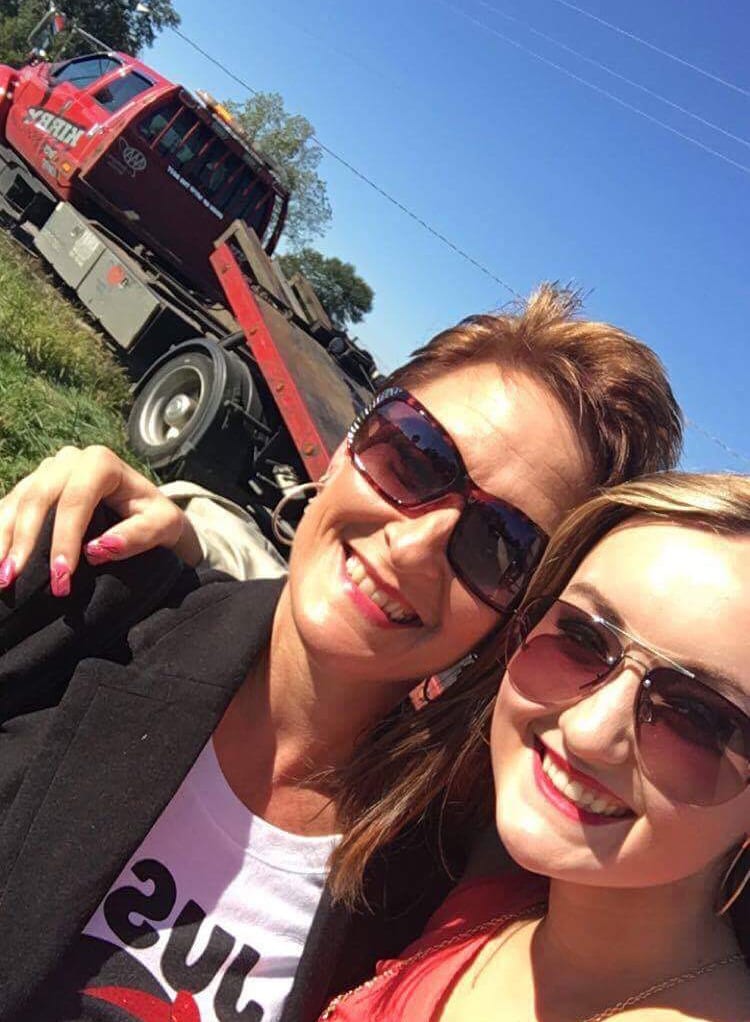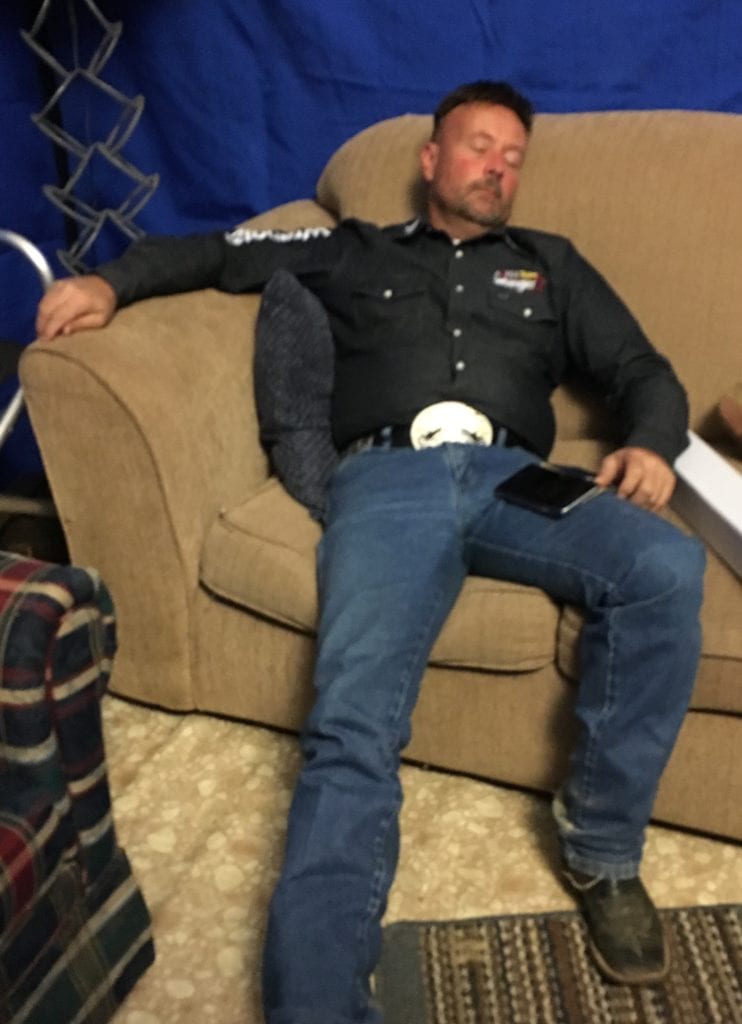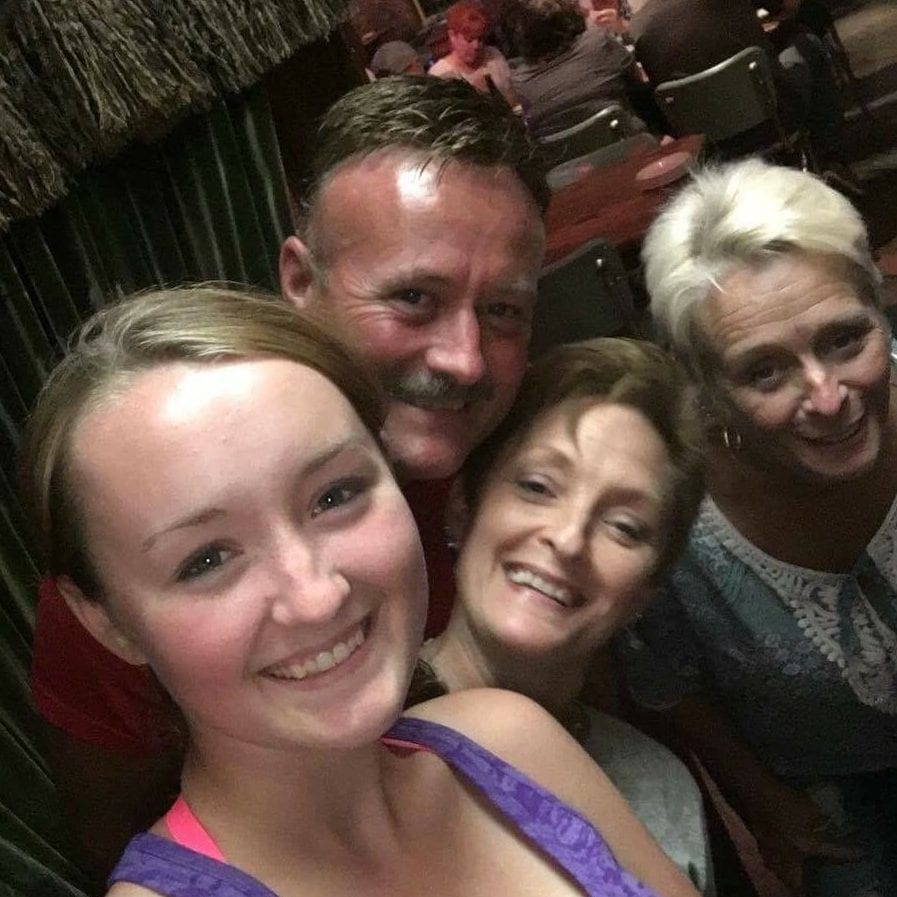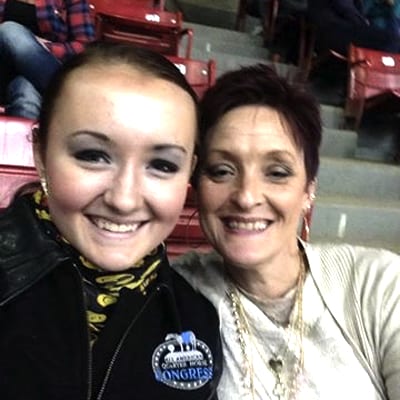As horse enthusiasts, exhibitors, and trainers alike, we all share one particular common bond. We, my friends, are natural born nomads. Think about it. What else except some mysterious heredity could possibly explain why we all feel the need to, on a peculiarly regular basis, pack up the house, barn, horses, kids, and yes, even the family dog, and schlep it all hundreds and sometimes thousands of miles away to a show?
Then, we unload this collection and reassemble it right next to another group of like-minded individuals with a similar mess. We reconvene year after year to the same stomping grounds. We complain about the footing, the stalls, you name it, knowing full well in a year’s time, we’ll be right back there again. We eat the same stuff from the same truck stop on the same major highway that sits on the same direct route to the same show that has fell on the same show date since Moses pulled two horses off of the arc and built an arena. With this basic theory of “Nomad Evolution” in place, I would like to share with you some of my research on this puzzling behavior.
 Horse people have their own perspective when it comes to living in a “Hunter-Gatherer” format of life. From their point of view, you can’t appear to be that crazy if you hunt other people who are just as willing as you are to gather (and not to mention, legitimize) the seventh purchase of yet another pair of boots within the last six months, all in black.
Horse people have their own perspective when it comes to living in a “Hunter-Gatherer” format of life. From their point of view, you can’t appear to be that crazy if you hunt other people who are just as willing as you are to gather (and not to mention, legitimize) the seventh purchase of yet another pair of boots within the last six months, all in black.
It is imperative, that all clothing obtained to wear on a regular basis must be “horse show friendly”. The translation of this is simple; these garments must be able to provide enough range of motion to prevent chafing, repel stains such as hoof black and face grease, and not to mention, camouflage the occasional splurge from a taco salad gone awry. The wardrobe must also double as both business and evening wear. When your equine attire is not being worn it may be easily stored by allowing it to stand up on its own in a safe location. Horse show gear has this unique adaptation due to the hundreds of layers of steamed in extra heavy starch. This mystical process creates the possibility of it walking out on its own. There are legends of trainers who have actually passed on but continued to show posthumously for several days all due to the alchemy of a talented dry cleaner.
 Known fact: horse people are notorious for breaking anything mechanical. There is a vast culture of “show nomads” that have been shown to have profound negative effects on vehicles, tractors, lawn mowers, and even margarita mixers. My daughter Ellexxah and I recently witnessed this phenomenon firsthand. En route to the Ohio Expo Center to assist in the pre-Congress build, we found ourselves suddenly struck down with the horse show nomad curse. Our dually… lost acceleration… and…died.
Known fact: horse people are notorious for breaking anything mechanical. There is a vast culture of “show nomads” that have been shown to have profound negative effects on vehicles, tractors, lawn mowers, and even margarita mixers. My daughter Ellexxah and I recently witnessed this phenomenon firsthand. En route to the Ohio Expo Center to assist in the pre-Congress build, we found ourselves suddenly struck down with the horse show nomad curse. Our dually… lost acceleration… and…died.
This succession of events is the first step in a familiar circle of life for our kind. If you are part of the genotype, then you should easily recognize this ritual. The cycle revolves in this order. The subject gets in the truck. The subject drives the truck. The truck breaks down. The subject then violently curses the truck for several long minutes before calling the towing service. (pictured left) The subject then puts out signals to brothers in arms in the outlying area to come to the rescue.
To ensure help is on the way, the subject promises drinks all around following its retrieval. This revolution of circumstances is in a constant state of motion among horse show nomads. Whatever state you’re in, somewhere there’s a horse trailer broke down, and within it is a driver that’s called the truck a no good so and so for going on the 12th time.
 Nomads have also been known to show anti-social behavior in certain groups. It is fully understood that horse show people communicate and share ideas easily with other members of their community. However, for the trainer sub-species, their socialization is diminished even further. I have personally been privy to situations where the trainer species exhibits terrific difficulty in holding focus in conversations with others about anything other than the four-legged way of life.
Nomads have also been known to show anti-social behavior in certain groups. It is fully understood that horse show people communicate and share ideas easily with other members of their community. However, for the trainer sub-species, their socialization is diminished even further. I have personally been privy to situations where the trainer species exhibits terrific difficulty in holding focus in conversations with others about anything other than the four-legged way of life.
When put into a foreign environment, such as a family reunion, the struggle is real. Even when joined with blood relatives, the trainer has difficulty being interested in a discussion about his niece’s ballet recital. Instead, he is distracted by the thought of how well she’d fit the bay gelding at home for the novice horsemanship next year.
In closing, the total of my findings throughout the 43 years of study of the horse show nomad phenomena, I have observed that this community is above all, non-discriminatory. Whether you were born to it or contracted it through osmosis, the affliction is an epidemic. It has become a widespread virus, reaching through all 50 states and thirteen different countries. So embrace your inner nomad!
 As you well know, this month ushers in the 50th Anniversary of the All-American Quarter Horse Congress. As a matter of fact, this marks my 36th consecutive trip to the “Land of Oz.” I truly encourage you to do your own field study. Take the time to introduce yourselves to a few fledgling nomads trying to find their niche in this rather eclectic world that we are all drawn to. It has been said that “It takes a village.”
As you well know, this month ushers in the 50th Anniversary of the All-American Quarter Horse Congress. As a matter of fact, this marks my 36th consecutive trip to the “Land of Oz.” I truly encourage you to do your own field study. Take the time to introduce yourselves to a few fledgling nomads trying to find their niche in this rather eclectic world that we are all drawn to. It has been said that “It takes a village.”
Well, I for one, have to agree. Whatever you call us, nomads, horse show folk, or just a plain bunch of idiots, it takes us all to share stories, be supportive and proud of one another, and most importantly, enjoy your show family. They may not be blood, but they are those who are close to your heart, and you know you’ll be seeing them down the road. They are the ones who will be pulling onto the grounds right behind you in the next couple of days. Just another member of the caravan of nomads. Hey, I guess I could have referred to us as carnies!
Ellexxah and I will see you all soon. Safe travels!








